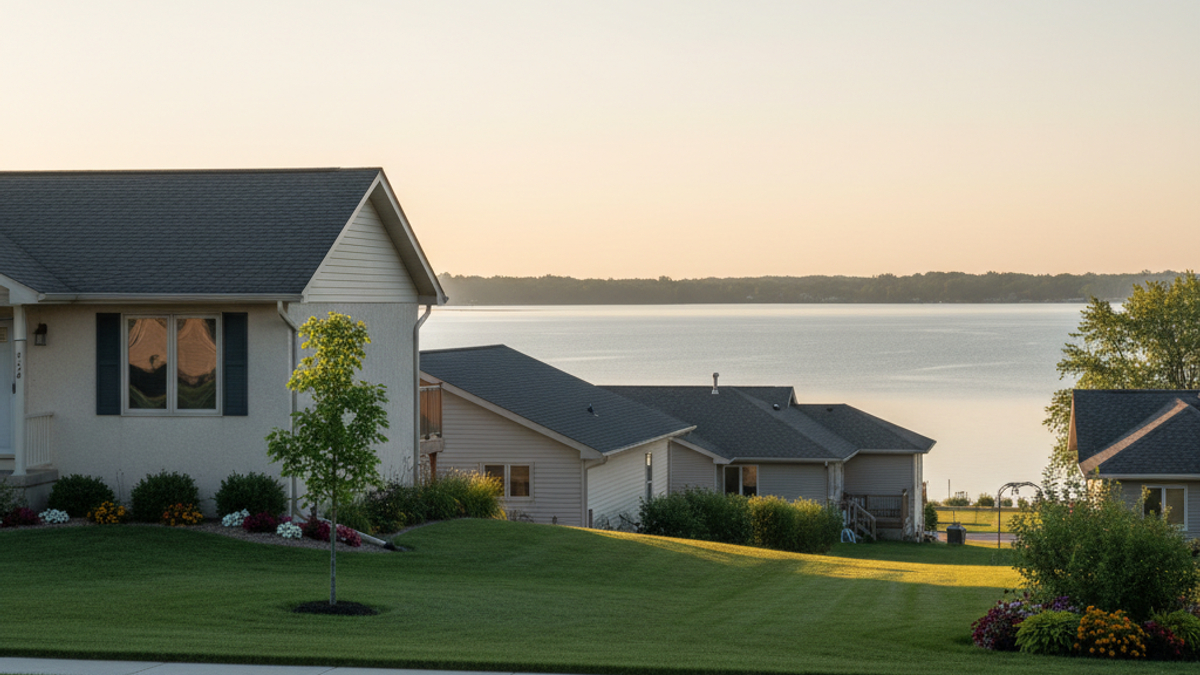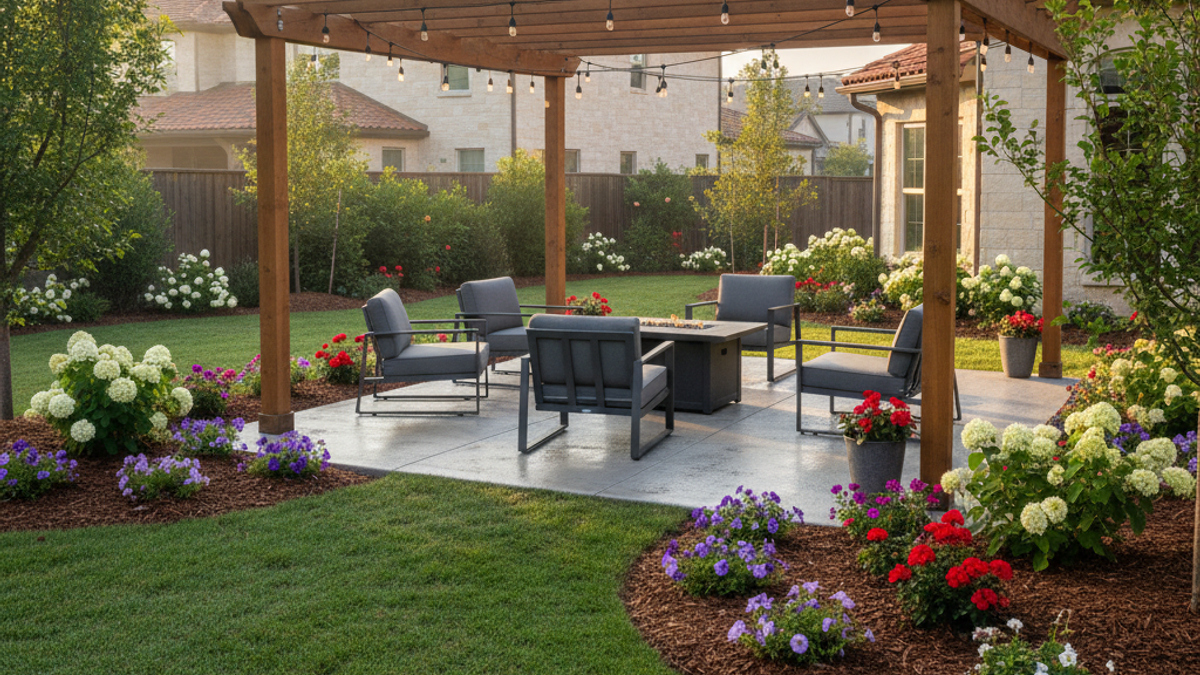Sun Prairie’s Market Pulse
Right-now trends
The spring of 2025 has felt a bit like musical chairs. Too many buyers circling, not enough chairs when the music stops. Median days on market? Hovering in the low teens. Average list-to-sale ratio? Creeping above 101 percent more weeks than not.
Agents on the ground blame two things:
- New construction lags. Builders slowed during the 2022-23 rate jumps, so the pipeline is thin.
- Madison spillover. Remote-flex professionals love the shorter commute and slightly lower price tag up here.
Translation for you: if you tour a freshly listed home on a sunny Saturday in May, expect a packed driveway and an offer deadline by Sunday supper. Unless you lead with a strong price and tight contingencies you’ll be back scrolling Zillow by Monday morning.
Still, inventory is not frozen. Sun Prairie closed about 820 single-family sales in the last twelve months, roughly the same volume as 2021, only faster. So the game hasn’t stopped, it just rewards quick studies.
The interest-rate wild card
Everyone loves to chant “date the rate, marry the house.” Cute, sure. The truth? Rates decide how far your dollar stretches, and they shape seller psychology. In early 2024 we saw 30-year fixed rates flirting with 7.5 percent. That scared a chunk of would-be sellers into staying put because they didn’t want to trade their old 3 percent note for a pricier one.
This year the picture is softer. April averaged 6.25 percent across Dane County lenders. At that level, refinances will stay muted, but move-up owners finally pencil out a lateral payment instead of a leap. More listings appear, and competition cools, but only slightly.
Local loan officers predict a gentle glide to 5.9-6.1 percent by late fall if inflation cooperates. You snag a house today at 6.25 percent and you might be able to shave off half a point by the time the Packers hit the playoffs. Not pocket change, yet not life-changing either. Plan your timing around lifestyle first, rate second.
Seasons on repeat
Real estate folklore says buy in the dead of winter to steal a deal. Let’s test that against Sun Prairie’s last five years of data.
Month-by-month snapshot:
- March through June: listings pop 30-40 percent above the yearly average. Multiple offers are the norm. Median prices peak in June.
- July and August: supply stays high, but many buyers vanish to the Dells or Door County. Days on market tick up to a whopping 20. Sellers who priced too high start to blink.
- September through mid-November: quieter streets, cooler temps, secretly solid selection. Price reductions—when they happen—cluster here.
- Late November through February: inventory hits yearly lows, sometimes half of peak summer numbers. The rare listing can look lonely online. If it has a quirk that scared away warm-weather shoppers (no deck, odd layout) you hold the stronger hand.
Bottom line, the “best” time depends on which pain you’d rather endure: thin pickings but more leverage, or plentiful choices but elbow-to-elbow competition.
Local Life Events that Shift Prices
The corn effect
Every August Sun Prairie’s Sweet Corn Festival pulls 100,000 visitors through Angell Park. Home search traffic on the big portals dips that week. Folks are busy eating butter-slick corn and riding the tilt-a-whirl. Savvy buyers slide in showings on festival weekends and face fewer rival offers. It’s not a giant discount, think two to three grand off list, yet that can cover your closing costs.
School calendar mood swings
Classrooms start humming around the third week of August. Families that want a smooth first day prefer to close in July, move in early August, and register kids before the bell rings. You, on the other hand, could lean into September. Parents are unpacking backpacks, not writing offers, so you may negotiate a quieter inspection period.
In winter the reverse happens. January enrollments don’t loom, so urgency drops. Sellers who listed in late fall sometimes stare at snowbanks and stale listings. Offer a quick closing and they’ll perk up.
Economic sparks
Costco’s expansion by Highway 151, the new data-center project near American Parkway, and break-neck hiring at regional biotech firms all feed demand. When ground breaks on those job hubs, rental demand spikes first, then six to nine months later first-time buyers hunt for townhomes north of Main Street.
Before corporate HR announcements hit the news cycle local agents often hear whispers. Ask your agent if any “big-box dirt” rumors are circulating. If the answer is yes, speed up your timeline or prepare for a mini-price sprint in that micro-area.
Pros and Cons by Season
Spring buzz (March–June)
Pros
- Biggest menu of listings. Split-level? Brick ranch? Modern farmhouse on 1.5 acres? All show up.
- Longer daylight for after-work showings so you miss fewer opportunities.
- Contractors, inspectors, and appraisers work at full capacity so closing delays drop.
Cons
- Bidding wars eat your evenings. Many buyers release escalation clauses that leap five figures above list.
- Sellers feel bold. They skip staging, leave minor repairs undone, yet still expect premium numbers.
- Interest rates often climb as the economy warms, slicing your affordability just when you crave it most.
Strategy nugget: tour new listings on Thursday lunch breaks, fire off clean offers before Saturday open-house crowds. Yes, that means quick decision making. Keep your pre-approval and proof of funds sitting in your email drafts, ready to attach.
Summer stretch (July–August)
Pros
- Inventory remains healthy but buyer fatigue sets in. You may be the only one still swinging by that two-story on O’Keeffe Avenue.
- Sellers who listed in late spring sometimes chase the market down after a few price cuts.
- Moving companies and rental trucks are easy to book mid-week.
Cons
- Heat waves make attic and crawl-space inspections miserable, leading to skipped due diligence if you are not careful.
- Vacation mode slows communication. Underwriters, title reps, even sellers vanish for long weekends. Closing calendars stretch.
- Landscaping can look its best, hiding drainage issues that pop up later.
Strategy nugget: schedule a second showing after a thunderstorm. Watch where puddles linger and which basements smell earthy.
Fall opportunity window (September–Mid-November)
Pros
- Golden leaves, golden deals. Data shows median sale prices dip one to two percent versus June highs.
- Competition calms. Showings may be you, your agent, and the seller’s cat.
- Contractors have openings so post-close renovations start faster.
Cons
- Daylight fades fast. Evening showings might reveal poor exterior lighting.
- Appraisers juggle end-of-year volume for refinances, causing scheduling crunches.
- Mortgage pros push to hit annual targets and sometimes over-promise turnaround times.
Strategy nugget: request a seller-paid two-one buydown. Many owners in October would rather fund points than drop price. You win both rate relief and monthly flexibility.
Winter wildcard (Late November–February)
Pros
- Listings that brave the snow usually shout “must sell.” That’s leverage.
- Fewer scheduled showings means relaxed walkthroughs, no overlapping buyers.
- Moving companies discount rates between the holidays.
Cons
- Limited selection, sometimes fewer than fifty active single-family homes in the entire city.
- Weather can stall inspections and exterior appraisals. Pull de-icer onto the roof at your own risk.
- Hard to judge landscaping, roof condition, and overall curb appeal under six inches of powder.
Strategy nugget: negotiate a post-close credit for exterior paint, fencing, or patio repair. Sellers know you can’t fully inspect those items in January.
Voices from the Field
Agent insights
I called three hardworking local agents on the same Wednesday to catch them between closings.
- Amy B., ten years in the trenches, said April gets the headlines but she writes her cleanest offers in July when the “Instagram buyers” are up north on pontoon boats.
- Chris M., born and raised on the east side, swears by October. His stat tracking shows a consistent two-percent discount versus list.
- Jamal R., newer yet fierce negotiator, urges buyers to shop December because “every seller left on the shelf is negotiating with themselves.”
All three agreed on one thing. The right house at the wrong time still beats the wrong house at the perfect time. Chew on that.
Recent buyers spill
Josh and Lina closed on a two-story near Smith’s Crossing last September. They toured the day the seller dropped price by twelve grand. They offered list, paid fifty percent of closing costs, and locked a 6.8 percent rate. They plan to refi when rates drop below six. “We missed the frenzied spring circus and got a fair deal,” Lina said.
Maya, a first-time buyer who closed in February, scored a ranch below assessed value. The catch? Snow hid a cracked driveway. She budgeted four thousand for repairs after thaw. “Worth it,” she shrugged. Her payment sits two hundred bucks under comparable rentals around town.
Brad and Emily braved April. Their dream Cape Cod popped up Thursday, they offered twenty over ask and waived appraisal, snagged the keys. No regrets, though they still breathe into a paper bag when recalling escalation clauses. “We wanted that specific block, timing be damned,” Brad admitted.
Notice a theme? Personal priorities steered each timeline more than pure math.
So, When Should YOU Buy?
Let’s zoom out. Ask yourself:
- Can I comfortably carry the projected payment plus one hundred fifty a month for maintenance?
- Am I ready to move within ninety days if the right listing appears?
- Do I have at least two percent of the purchase price in reserves after closing?
“Yes” three times? You’re ready to hunt. The season can tweak your leverage but won’t make or break your future wealth if you hold the home longer than five years.
If you crave maximum choice and don’t flinch at bidding wars, circle March through June.
If you treasure negotiation more than variety, set alerts for late September and keep cocoa ready for December showings.
And if you just need a roof near a new job, ignore the calendar, focus on the inspection report, and keep moving.
Remember, Sun Prairie is growing steadily. Waiting six months may shave a few grand off interest, yet rising prices can cancel that gain. Play both sides of the equation by shopping when your personal life is settled and your financing ducks line up.
Ready to start? Reach out to a local agent, pull a fresh pre-approval, and step into the market with eyes wide open. The perfect day to buy might be the next time you unlock a front door and feel that click in your gut.
Good luck out there.













